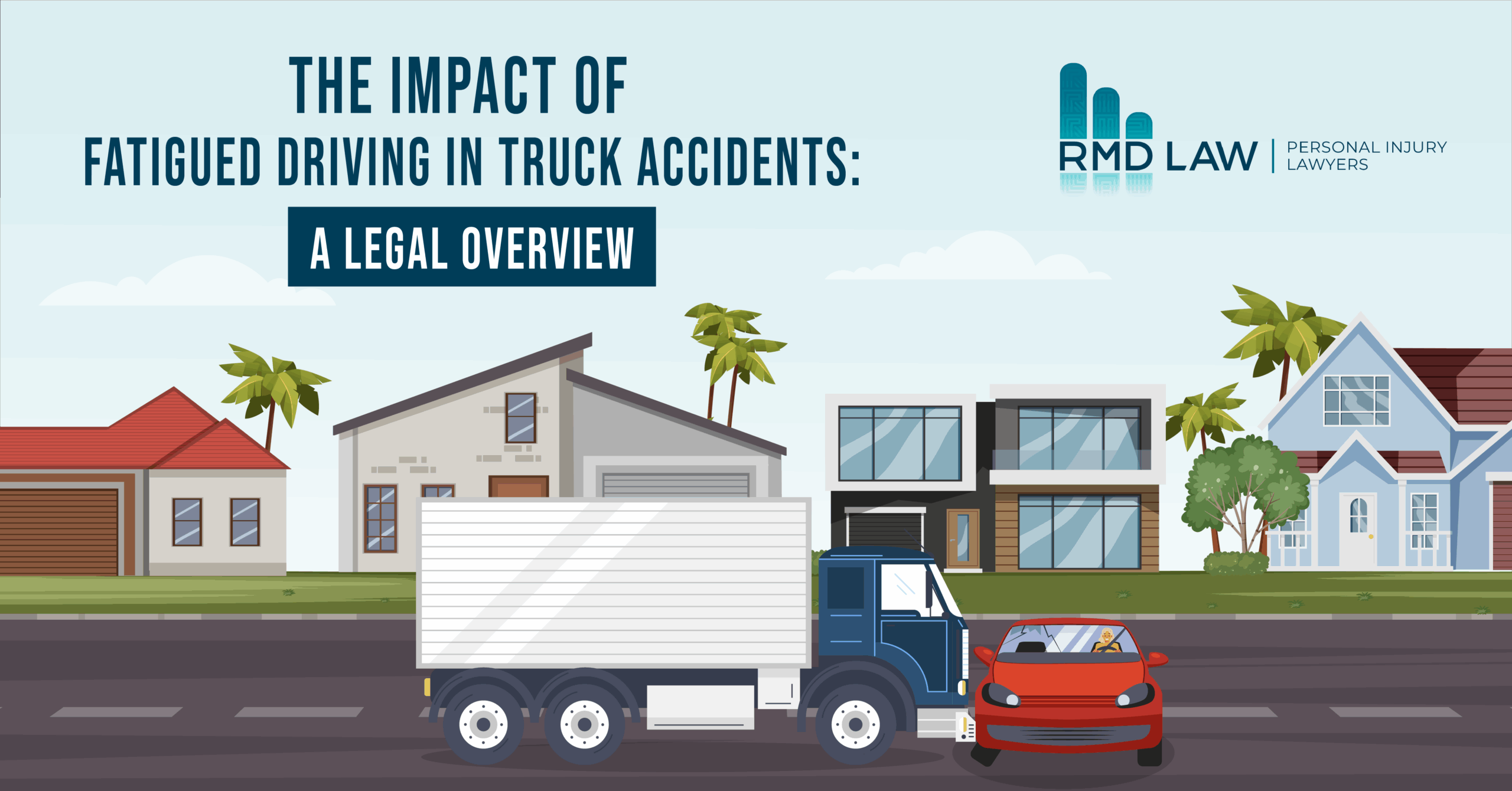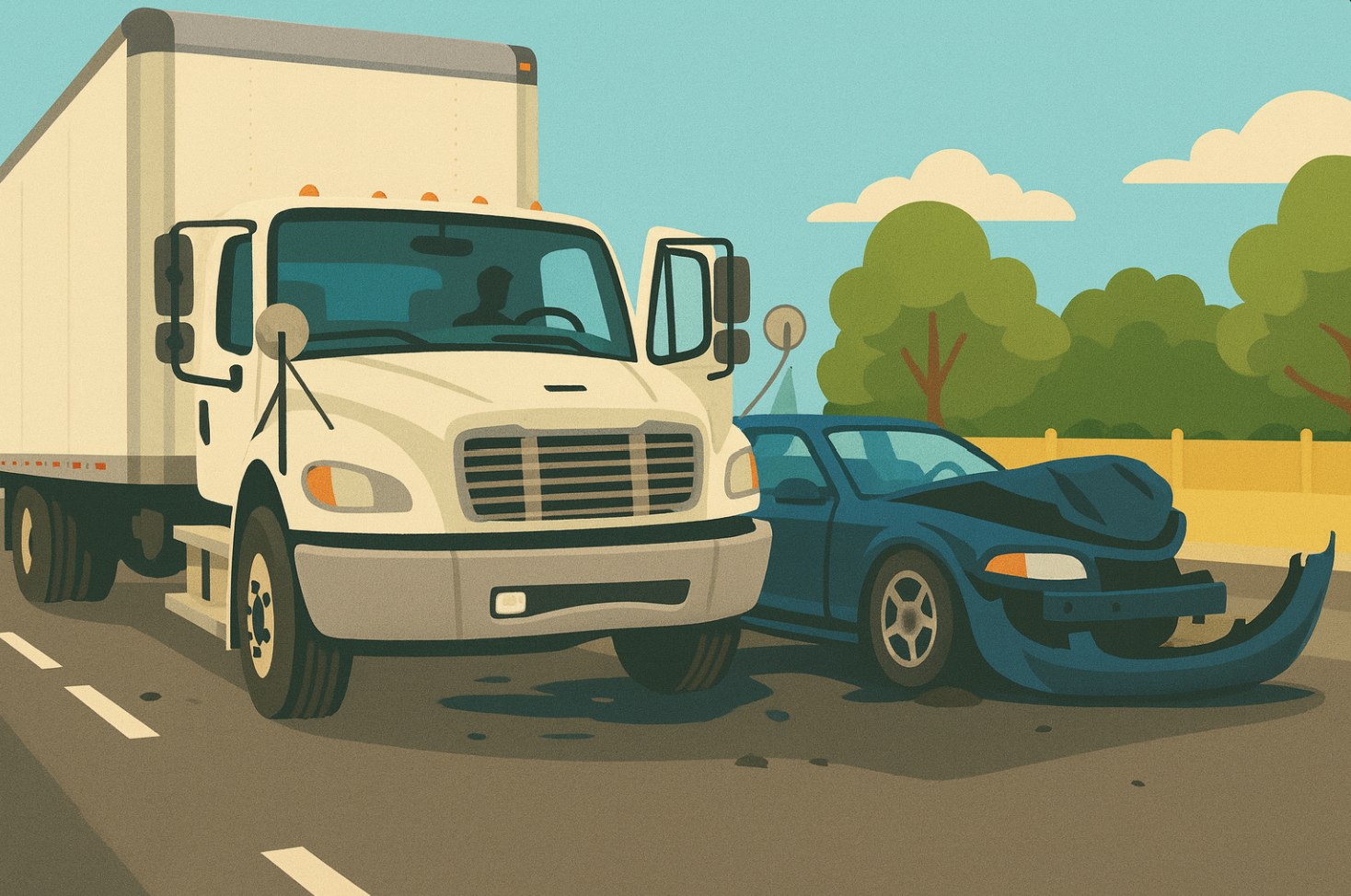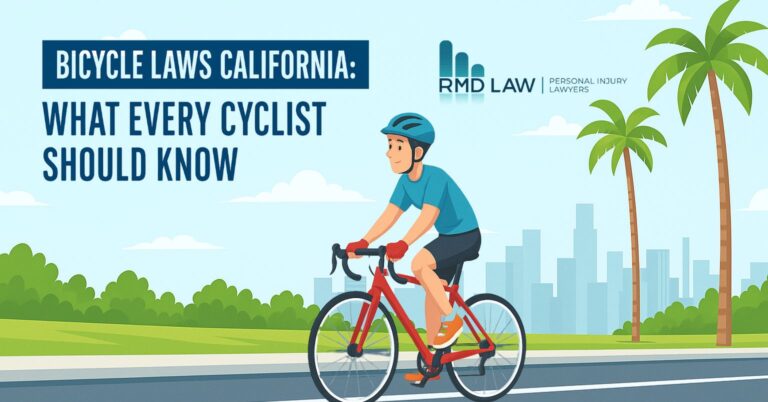
Key Takeaways
Fatigued Driving Puts Everyone on the Road at Risk
- Exhaustion slows reflexes, impairs judgment, and leads to deadly truck crashes. Long hours and poor rest conditions make professional drivers especially vulnerable to fatigue. Recognizing the signs of fatigued driving can help prevent tragedy before it happens.
Federal and State Laws Set Strict Rest Requirements
- The FMCSA enforces Hours-of-Service limits to keep drivers alert and safe. California also adds rest and meal break rules for intrastate truckers. Violations, such as falsified logs or skipped breaks, can help prove negligence after a crash.
Proving Negligence Requires Solid Evidence
- ELD data, GPS records, company schedules, and witness statements all strengthen a fatigue-related claim. The more proof you have of rest violations or overwork, the stronger your case becomes.
A Truck Accident Lawyer Can Protect Your Rights
- A truck accident lawyer can investigate, gather evidence, and negotiate fair compensation for your injuries. RMD Law helps victims of fatigue-related truck crashes hold negligent drivers and companies accountable.
The Hidden Cost of Fatigue: How Tired Truck Drivers Cause Serious Crashes
Every year, countless Californians suffer because a truck driver stayed behind the wheel too long. Fatigue dulls the senses—reaction times slow, focus fades, and judgment slips. When an exhausted driver controls an 80,000-pound vehicle, even a few seconds of inattention can cause a devastating crash. Families are left dealing with grief, hospital bills, and the loss of income that follows.
These accidents aren’t random. They often trace back to fatigued driving, a preventable risk that continues to plague the trucking industry. Many drivers face grueling schedules, tight deadlines, and pressure to meet delivery quotas, leaving little room for rest.
This article explains how exhaustion leads to truck accidents in California and what can be done about it. You’ll learn how fatigue affects drivers, what laws govern rest periods, how negligence is proven, and what legal options victims and families have when tragedy strikes.

Why Fatigued Driving Is Dangerous for Truck Drivers
Truck drivers spend long hours on the road, often under intense pressure to meet deadlines. That combination makes fatigued driving one of the most dangerous and overlooked risks in the trucking industry.
Here’s why exhaustion can be as deadly as alcohol or distraction behind the wheel:
Fatigue impairs alertness, reflexes, and decision-making
When you’re tired, your brain reacts more slowly to changing road conditions. NHTSA studies show that being awake for 18 hours affects reaction time almost as much as a blood alcohol level of 0.05%. For truck drivers navigating traffic or winding highways, even a half-second delay can mean the difference between braking in time and causing a collision.
Long hours and demanding schedules take a toll
Trucking often involves overnight shifts, back-to-back routes, and unpredictable rest periods. The constant pressure to meet delivery schedules disrupts normal sleep cycles, leading to chronic exhaustion that builds over days or weeks.
Sleep deprivation triggers dangerous “microsleeps”
A few seconds of unplanned sleep behind the wheel is all it takes to cause a tragedy. Microsleeps, which are brief, uncontrollable lapses into sleep, can make a driver miss exits, drift into another lane, or fail to notice stopped traffic.
Heavy commercial trucks magnify the risks
Large rigs can weigh up to 80,000 pounds and require much longer stopping distances than passenger vehicles. When fatigue slows a driver’s reaction time, those extra seconds can turn a near-miss into a deadly crash.
Physical strain and poor rest facilities worsen exhaustion
Many truck drivers spend hours sitting in uncomfortable positions, eat irregularly, and rest in noisy or unsafe parking areas. These conditions prevent real recovery, leaving them mentally and physically drained.
Pressure from employers can intensify fatigue
Some trucking companies push unrealistic schedules or fail to enforce rest period rules. This pressure can make drivers skip breaks or falsify logbooks to stay on the road longer than allowed.

Federal and State Regulations on Truck Driver Rest Periods
To combat fatigued driving, strict federal and state rules govern how long truck drivers can stay behind the wheel. These laws exist for one reason: safety. When followed, they reduce exhaustion-related crashes. When ignored, they can become powerful evidence of negligence.
Federal Hours-of-Service (HOS) Regulations
The Federal Motor Carrier Safety Administration (FMCSA) sets national limits on driving hours for commercial truck drivers. These rules aim to ensure every driver gets adequate rest before returning to the road:
- A maximum of 11 hours of driving after 10 consecutive hours off duty
- A 14-hour workday limit, including driving and non-driving tasks
- A mandatory 30-minute break after 8 hours of driving
- A 60/70-hour limit over 7 or 8 consecutive days, depending on the carrier’s schedule
Drivers must log their hours using Electronic Logging Devices (ELDs), which automatically track driving time and rest periods. Violating these limits, like skipping breaks, falsifying records, or tampering with ELDs, can lead to severe penalties. It can also prove that fatigue contributed to a crash.
California’s Additional Labor Protections
California applies extra rules for intrastate drivers (those operating solely within the state). The state’s labor code requires rest and meal breaks that align with its worker protection standards, not just federal safety laws.
Under California law, truck drivers are entitled to:
- A 30-minute meal break after 5 hours of work
- An additional 30-minute break after 10 hours
- Paid 10-minute rest breaks for every 4 hours worked
These protections ensure drivers get enough downtime, but they’re often overlooked or ignored. When trucking companies push drivers to exceed legal hours, they not only endanger lives but also expose themselves to liability.

Proving Negligence in Fatigued Driving Truck Accidents
Establishing fault in a truck accident caused by fatigued driving isn’t always straightforward. Fatigue leaves no physical trace like alcohol or drugs, so proving it requires detailed investigation and evidence that connects exhaustion to the crash.
In California, negligence means showing that someone failed to act with reasonable care, and that failure caused harm.
Who can be held liable?
Responsibility doesn’t always fall on the driver alone. Multiple parties may share liability depending on how and why fatigue occurred:
- Truck drivers who ignored rest requirements or drove while clearly too tired.
- Trucking companies that pressured drivers to stay on schedule or encouraged falsifying logbooks.
- Logistics firms that created unrealistic delivery deadlines or failed to monitor compliance with Hours-of-Service rules.
- Vehicle maintenance providers, if poor mechanical conditions—like worn brakes or faulty tires—made fatigue-related mistakes more dangerous.
What needs to be proven?
To build a strong case, your attorney must prove:
- Duty of care – The driver and their employer were obligated to operate safely and follow rest regulations.
- Breach of duty – They violated that duty by driving while fatigued, skipping rest periods, or tampering with ELD data.
- Causation – The driver’s fatigue directly led to the crash and resulting injuries.
- Damages – The victim suffered measurable losses, such as medical expenses, lost wages, or pain and suffering.

Gathering Evidence to Support a Fatigue-Related Claim
Building a strong case for fatigued driving means more than saying the driver was tired; it requires solid proof. The right evidence can reveal how long the driver was on the road, how often they rested, and whether their employer encouraged unsafe practices. In many cases, this data is what turns suspicion into a winning claim.
Electronic Logging Device (ELD) data
Federal law requires most commercial trucks to have ELDs that record driving hours and rest periods. These records help determine if the driver violated Hours-of-Service limits or skipped mandatory breaks.
GPS and toll records
GPS data and toll receipts can verify where the truck was and when. If the trip timeline doesn’t match the logbook, it may suggest the driver or company tried to hide excessive driving hours.
Company dispatch logs and delivery schedules
These documents show how demanding a driver’s workload was. Tight or unrealistic schedules often indicate that the employer pressured the driver to keep moving, despite fatigue.
Driver employment and medical records
Records may reveal sleep disorders, use of fatigue-inducing medications, or a history of overwork. Such details can strengthen a claim by showing that the driver wasn’t fit to operate a commercial vehicle safely.
Witness statements
Testimony from other drivers, first responders, or bystanders can provide firsthand accounts of erratic driving, swerving, or the driver appearing exhausted before the crash.
Expert testimony
Accident reconstructionists, sleep specialists, or human factors experts can connect the evidence to the driver’s impaired alertness or delayed reactions. Their analyses often carry significant weight in negotiations or the court.

Filing a Truck Accident Claim in California
Trucking companies and insurers move fast to protect themselves, and you should too. Filing a truck accident claim in California involves strict deadlines and detailed procedures, but with the right guidance, you can pursue full compensation for your losses.
Statute of limitations
Under California Code of Civil Procedure § 335.1, you have two years from the date of injury to file a personal injury claim. Missing this deadline can bar you from recovering damages, no matter how strong your case is.
Steps in the claims process
- Hire an experienced truck accident lawyer
Trucking cases are complex, involving federal safety rules, electronic data, and multiple parties. A lawyer familiar with fatigue management truck driver cases can help gather key evidence, protect your rights, and handle communications with insurers.
- File a claim with the trucking company’s insurer
Your attorney will notify the carrier’s insurance company of your intent to seek compensation. This includes medical costs, property damage, lost wages, and pain and suffering.
- Begin the discovery phase
This is where evidence is exchanged. Your lawyer can request ELD data, company dispatch logs, and driver records, materials that often reveal rest period violations or unrealistic scheduling.
- Negotiate a settlement
Many cases resolve through negotiation once liability is clear. A strong evidence-backed claim increases your leverage for a fair settlement.
- Go to trial if needed
If insurers refuse to settle, your attorney can take the case to court and present evidence to a jury.

How a Truck Accident Lawyer Can Help in Fatigue-Related Cases
A skilled truck accident lawyer not only handles the legal complexities but also protects your interests against powerful trucking and insurance companies determined to minimize payouts.
Here’s how experienced attorneys help victims in fatigue-related truck accidents:
Conduct a detailed investigation
Lawyers dig into every aspect of the crash—examining the driver’s schedule, electronic logs, and company communications—to uncover violations of Hours-of-Service rules and unsafe fatigue management truck drivers’ practices.
Analyze digital and physical evidence
They work with experts to review ELD data, GPS tracking, and black box records. These details often expose rest period violations or route manipulation that point directly to fatigue.
Identify all liable parties
Beyond the driver, your lawyer determines if the trucking company, logistics firm, or maintenance contractor contributed to the crash. Establishing shared liability can increase the compensation available.
Negotiate with insurers
Insurance adjusters often downplay fatigue or argue that victims were partly at fault. Attorneys counter these tactics with evidence and strong advocacy, ensuring settlements reflect the full scope of your injuries and losses.
Represent you in court if necessary
If negotiations fail, your lawyer will prepare your case for trial: presenting expert testimony, reconstructing the accident, and showing how fatigue directly caused the collision.
Provide steady guidance and support
Beyond legal work, an attorney helps you navigate medical bills, vehicle repairs, and insurance paperwork while you focus on recovery.

When Fatigue Meets the Law
Driver fatigue remains one of the most preventable causes of truck crashes on California roads. Behind every incident is often a long chain of pressure, poor scheduling, and ignored rest limits that endanger everyone nearby.
An experienced truck accident lawyer can uncover the truth behind a fatigue-related crash, hold negligent parties accountable, and fight for the compensation you deserve. These cases often involve complex evidence and powerful opponents, but you don’t have to face them alone.
RMD Law has helped countless Californians rebuild their lives after catastrophic truck accidents. Our attorneys understand how fatigue impacts both drivers and victims, and we’re here to stand by you every step of the way.
Contact RMD Law for a free case evaluation today.
FAQs
Fatigued driving happens when a driver operates a vehicle while tired or sleep-deprived, reducing focus and reaction time. For truck drivers, even a few seconds of inattention can cause a serious or fatal crash.
Federal Hours-of-Service (HOS) rules limit truckers to 11 hours of driving after 10 consecutive hours off duty. These regulations are designed to reduce truck driver fatigue management problems that lead to preventable accidents.
Proving fatigue involves reviewing Electronic Logging Device (ELD) data, GPS records, and delivery schedules to reveal rest period violations. Witness statements and medical records can further support a fatigue-related claim.
Liability can fall on the driver, their employer, or logistics firms that set unrealistic deadlines. Trucking companies may also share responsibility for neglecting fatigue management truck driver policies.
A truck accident lawyer investigates the crash, gathers evidence, and negotiates with insurers to prove negligence and recover fair compensation for victims.
- What is the Role of Expert Witnesses in Strengthening Personal Injury Cases? - November 20, 2025
- How Much Will My Insurance Increase After an Accident?: The Hidden Cost of Car Accidents in California - November 17, 2025
- California’s Weirdest Traffic Laws: Rules You Didn’t Know Existed - November 12, 2025



